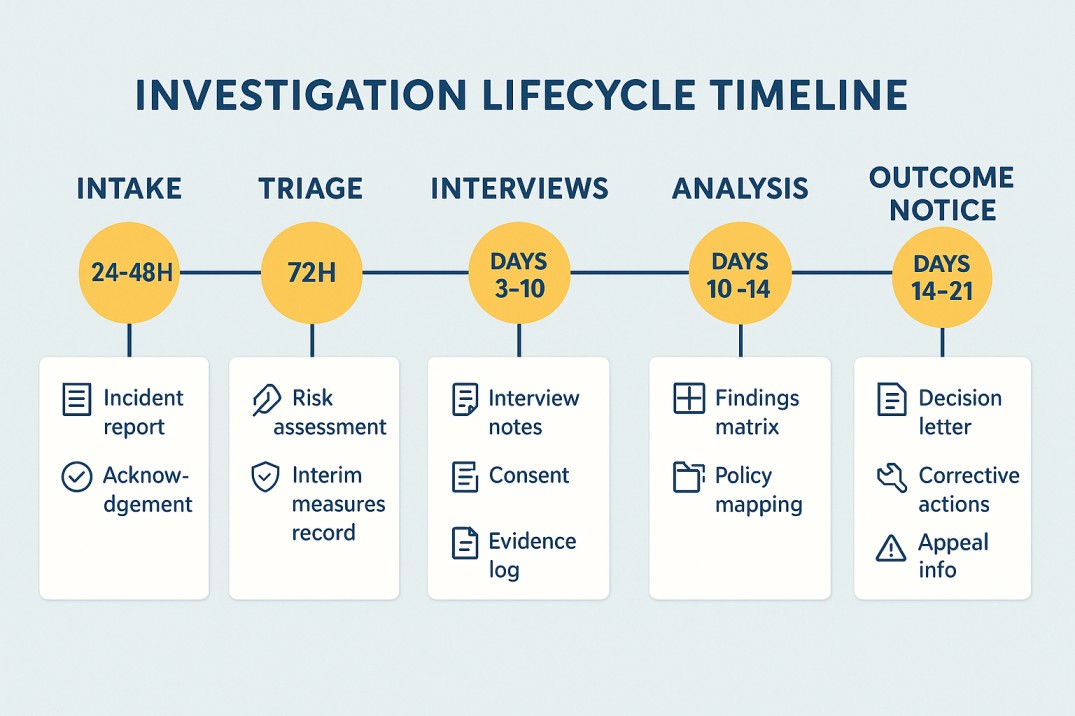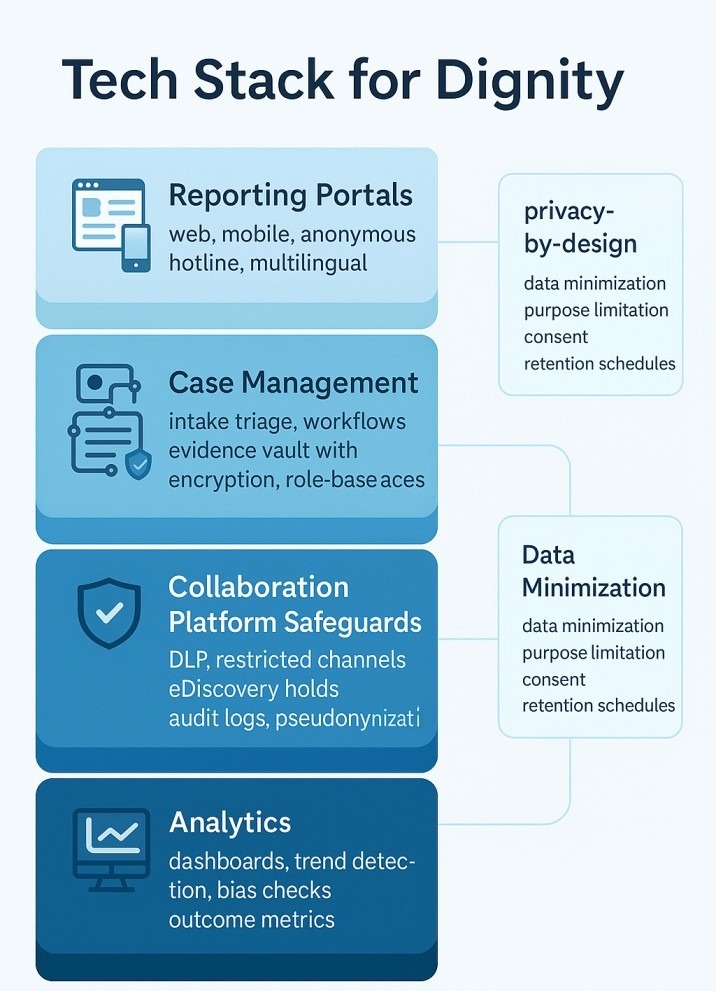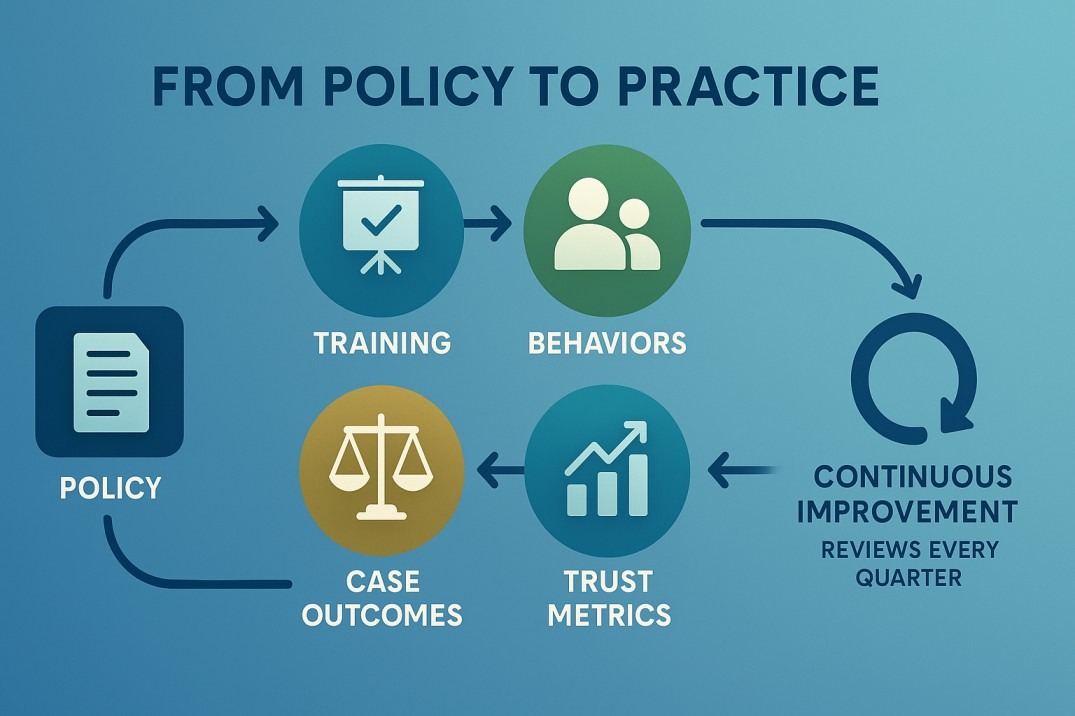The year 2025 has made one truth impossible to ignore: employees do their best work when dignity is non-negotiable. Behind every retention push, productivity initiative, and employer brand campaign lies a simpler prerequisite—people must feel safe. That is why psychological harassment at work is now treated as a strategic risk, not a soft-skill topic. The companies that win are the ones that define it precisely, detect it early, investigate it fairly, and repair harm quickly while reinforcing a culture where respect is the default.
Psychological harassment at work undermines dignity, trust, and performance across every level of an organization. Effective 2025 policies define behaviors clearly, establish accessible reporting paths, and ensure transparent investigations with measurable accountability. Companies that combine prevention training, trauma-informed response, and visible data tracking reduce harm and strengthen culture. True progress happens when respect becomes a daily habit, making psychological safety a lasting competitive advantage.
Defining the behavior in plain language
There’s a legal dimension and a human one, and they intersect in complicated ways. Statutes and case law draw lines, yet the lived experience of targets often begins with subtler patterns that are hard to name at first: persistent belittling, exclusion from information, mockery disguised as humor, or social undermining dressed up as “candor.” When leaders articulate that psychological harassment at work spans repeated verbal and non-verbal behaviors that erode a person’s dignity and impede their job performance, employees gain the vocabulary to spot the difference between firm feedback and humiliation. The policy’s power starts in these definitions, because clarity is the first form of protection.
The business case you can measure
Absenteeism, turnover, and quiet attrition spike when teams normalize hostility, and those costs are measurable in a P&L just as surely as software licenses. The hidden toll—lost collaboration, slower decision cycles, shadow escalation—compounds over quarters. Framed this way, psychological harassment at work is a preventable drag on revenue, a reputational risk in talent markets, and a compliance risk that can metastasize if mishandled. Executives do not need to be armchair clinicians to act decisively; they need a policy architecture that turns principles into routines.
Hybrid and remote vectors of harm
Hybrid and remote work add new theaters where harm can unfold. Private channels can become pressure cookers, and off-hours pings can morph into coercion cloaked as urgency. Cameras do not always capture tone, nor do emojis reliably convey intent. A policy written for 2015 office floors will miss modern vectors of harm in 2025. State plainly that psychological harassment at work can occur in Slack threads, project trackers, shared documents, and video calls, and that your standard of professionalism travels with the work. When a company applies one standard across physical and digital spaces, ambiguity evaporates.

What an effective policy looks like
The blueprint for effective policy is simple to say and exacting to implement. Start with a sharp definition, then add vivid, contextual examples. The scope explicitly includes contractors and vendors who influence the workplace. Clear, step-by-step reporting paths are codified—simple enough for a nervous person to follow at 2 a.m. Retaliation is off-limits—stated in plain, non-legal language. Confidentiality applies wherever possible, with limits explained without euphemism. Clear timelines govern triage and investigation. Defined roles ensure no complaint wanders leaderless. Above all, we state unmistakably that psychological harassment at work violates our values, and we will impose proportionate, documented consequences.
Reporting channels people actually use
Reporting channels are the heartbeat of trust. Some employees want a direct talk with HR; others need an anonymous channel to feel safe. Some prefer a manager escalation, while others fear managerial involvement. Offer parallel paths and treat them as equal citizens in the process. Make your intake form accessible from mobile devices, collect only the necessary facts, and allow attachments like screenshots or calendar entries. Remind reporters that psychological harassment at work can be documented through patterns, not just single extreme incidents, and teach them to log dates, witnesses, and impact on work. The easier you make credible reporting, the earlier you catch small fires before they become an inferno.
Investigation that earns legitimacy
Once a concern is raised, process integrity determines outcomes. Triage should be fast, impartial, and anchored in evidence standards you have shared in advance. Investigators need training in trauma-informed interviewing and bias interruption, and they need a script that explains confidentiality, notes, and next steps to every participant. The investigation record should capture chronology, communications, relevant policy clauses, and a clear finding with rationale. When leaders communicate that psychological harassment at work is evaluated against behavior, frequency, and impact—not a popularity contest—employees learn to trust the system even when outcomes are hard.

Manager training that changes behavior
Preventive training belongs to managers first, because norms cascade from the top down. Role-play is more effective than slides. Show a manager how feedback focused on tasks and expectations differs from commentary about personality and worth. Teach them to redirect team banter before it curdles into cruelty. Provide sentence starters that convert private worries into supportive, documented interventions. Embed scenarios drawn from your real work, including distributed collaboration, so managers can see themselves in the story. If they understand how psychological harassment at work corrodes psychological safety, they will act not out of fear of policy, but out of pride in leadership.
Care for reporters and fairness for respondents
Support after harm is not an afterthought; it is the proof point of culture. Offer confidential counseling, short-term accommodations like reassignment of reporting lines, schedule flexibility for medical or legal appointments, and monitored reintegration plans that reduce re-exposure risk. Establish clear reporting lines, offer schedule flexibility for medical or legal appointments, and closely monitor reintegration plans to reduce re-exposure risk. These actions show that psychological harassment at work isn’t just a policy issue; it’s a human wound that demands care. At the same time, give respondents due process, access to support resources, and a clear explanation of expected behavior changes, because fairness to all parties preserves legitimacy.
Measure what matters and publish progress
You cannot improve what you never measure. Track time-to-triage, investigation duration, substantiation rates by category, recurrence at team level, and the correlation between managerial training completion and complaint volume. Pair quantitative signals with qualitative pulse surveys that ask whether people believe the policy works. Publish a yearly transparency summary that preserves privacy while reporting trends and improvements. If your leadership team sees that psychological harassment at work declines when coaching and consequences are applied consistently, investment decisions get easier and skepticism fades.
Culture is the operating system
Culture remains the durable edge. Written rules prevent drift, but day-to-day micro-behaviors write the story people tell their friends. Praise the behaviors you want seen again—credit sharing, respectful dissent, and curiosity in conflict. When leaders narrate aloud how they corrected themselves after a tense moment, they model repair. When teammates see a peer interrupted and watch someone else invite them back in, they witness the assertion that psychological harassment at work is not only prohibited but unwelcome at a molecular level. Small acts accumulate into climate change.
Technology with guardrails, not suspicion
Technology can help or harm depending on how it’s wielded. Moderation tools in collaboration platforms can flag slurs and repeated derogatory phrases, while sentiment dashboards can highlight channels with unusual negativity. Case-management software can automate deadlines, track actions, and produce auditable trails that protect everyone. At the same time, surveillance without consent erodes trust and can chill legitimate critique. Make choices in the open, document your governance, and remind employees that psychological harassment at work is identified through behavior and context, not keyword bingo.

Navigating global standards with a clear baseline
Global organizations face a patchwork of legal standards and cultural expectations. Some jurisdictions emphasize dignity at work as a legal right; others nest the issue under broader anti-discrimination laws or health and safety duties. Establish a global baseline that exceeds the strictest standard you face, then localize procedures and notices to comply with regional requirements. Translate the policy and training into the languages people actually use, and involve local leaders to adapt examples appropriately. The more explicit you are that psychological harassment at work violates your global ethos, the easier it becomes to harmonize practice across borders.
A realistic case vignette
Consider a case vignette that many companies would recognize. A high-performing manager begins to “joke” in project channels that a teammate is “too sensitive for real deadlines.” Over a month, the teammate is left off two key meetings and learns about changes only after decisions are made. Another peer raises a concern, unsure if it rises to a policy issue. In a mature system, intake occurs the same day, the teammate is invited to share a timeline, and the manager’s communications are reviewed alongside witness accounts. The finding concludes that psychological harassment at work occurred in the form of persistent belittling and informational exclusion. Coaching, a written warning, and a monitored plan follow. The teammate receives support, a rotation to a new project, and a commitment that decisions affecting their role will include them in real time. Trust in the system grows because the process was prompt, fair, and proportionate.
From policy to practice, quarter after quarter
In the end, policy is scaffolding for values. When leaders embed plain-language definitions, parallel reporting paths, timely and unbiased investigations, equitable remedies, and credible transparency, the workplace becomes safer by design. When they reinforce those mechanics with manager practice, support resources, and respectful daily habits, the message is unmistakable. Psychological harassment at work is neither a rite of passage nor an acceptable management style. It is a preventable harm, and in 2025 the best organizations prevent it with discipline, humility, and relentless clarity.

Conclusion
In 2025, the organizations that keep their edge are the ones that translate principles into muscle memory: clear definitions, parallel reporting paths, timely and unbiased investigations, proportionate outcomes, and visible care for everyone involved. They measure what they do, publish what they learn, and refine quarter over quarter. When these habits compound, psychological safety becomes a competitive advantage rather than a buzzword, and psychological harassment at work loses the oxygen it needs to survive. That is what “policies that work” look like—structures that safeguard dignity, earn trust, and help people do the best work of their careers.
Andrea Balint is a writer and researcher focused on human behavior, workplace psychology, and personal growth. Through her work at CareersMomentum, she explores how mindset, leadership, and emotional intelligence shape modern careers. With a background in communication and HR development, she transforms complex ideas into practical insights that help readers build clarity, confidence, and professional purpose.
